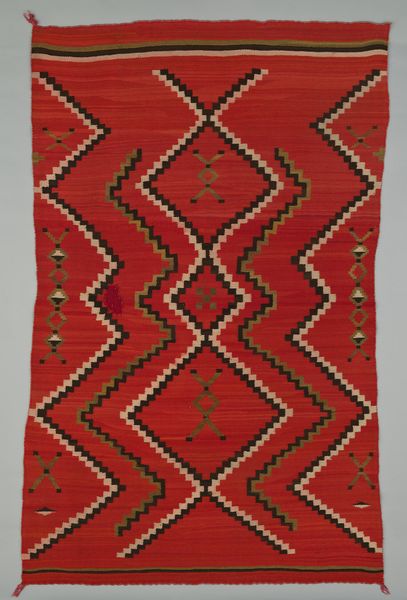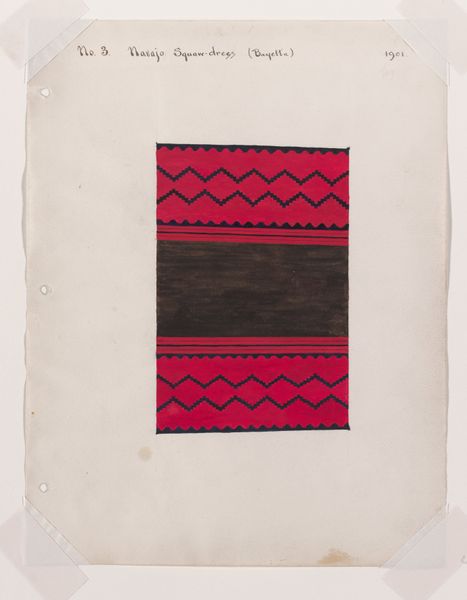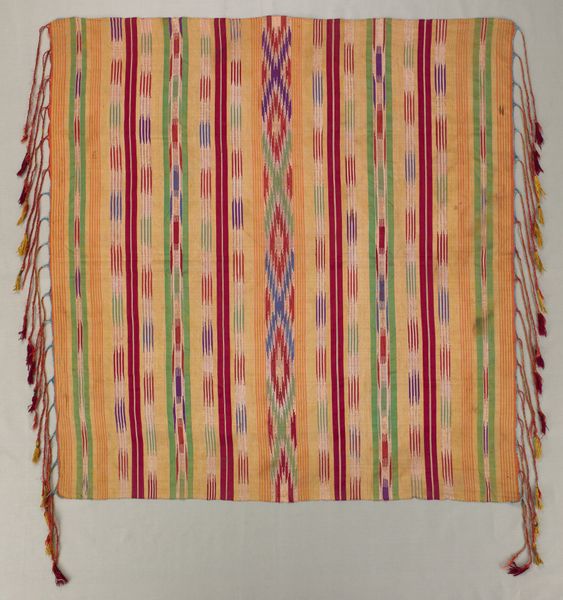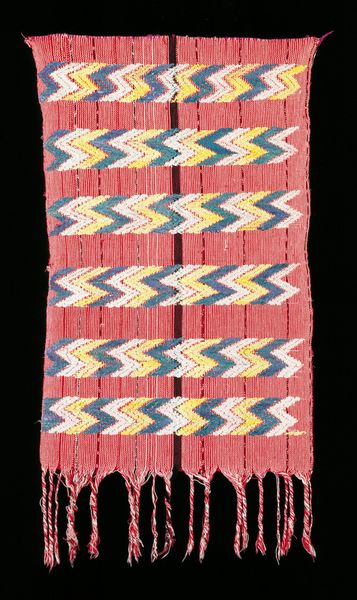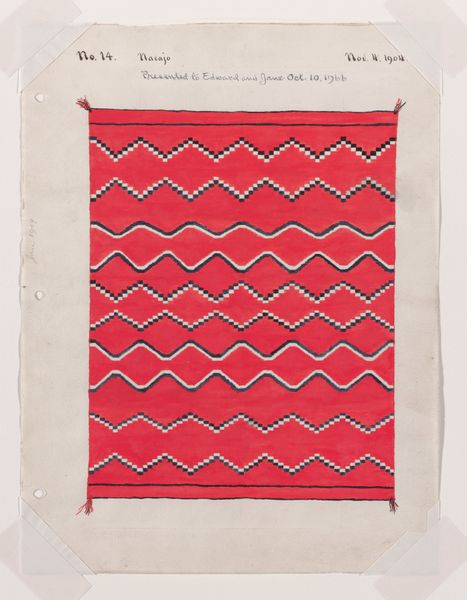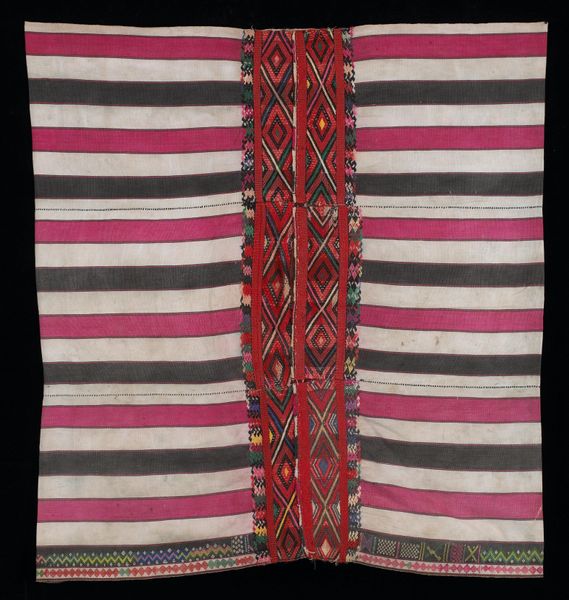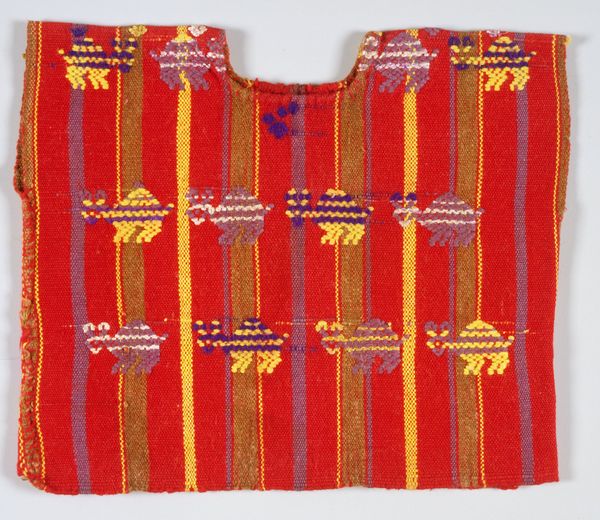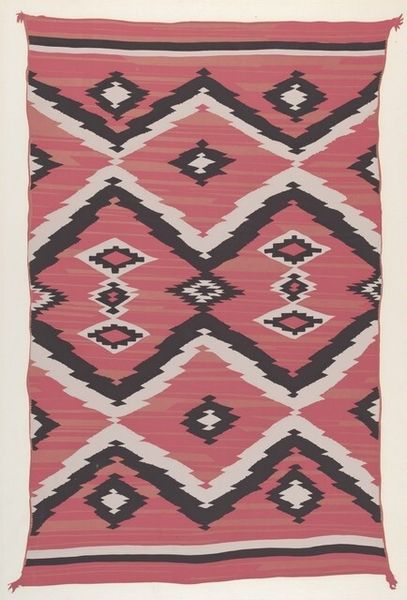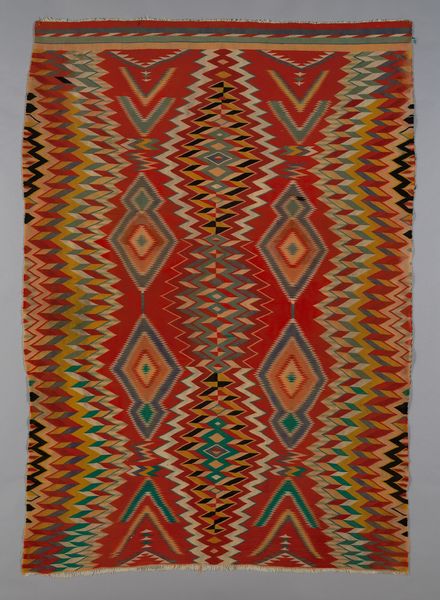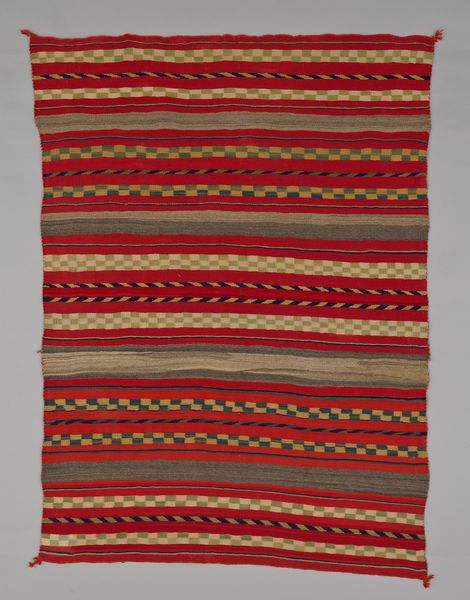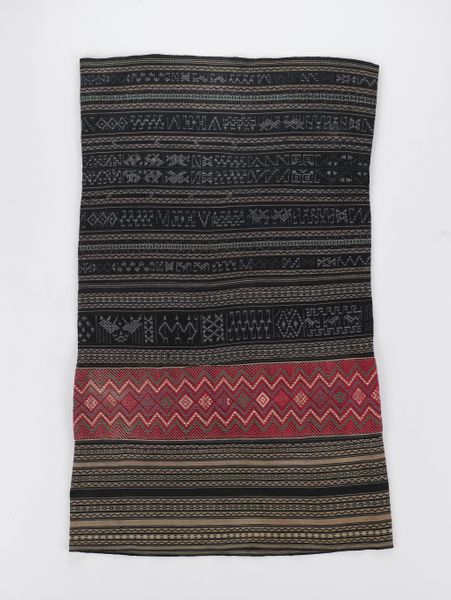
painting
#
painting
#
geometric
#
textile design
#
indigenous-americas
Dimensions: 7 3/8 × 5 15/16 in. (18.73 × 15.08 cm) (image)21 1/8 × 17 1/8 × 1 in. (53.66 × 43.5 × 2.54 cm) (outer frame)
Copyright: No Known Copyright
Curator: Take a moment with this artwork entitled "Watercolor" from around the 20th century. It is attributed to an anonymous Indigenous Americas artist and now held in the collection of the Minneapolis Institute of Art. What is your first impression? Editor: Well, immediately, I'm drawn to its vibrancy. The red dominates, but the complexity of the geometric pattern also fascinates—like peering into a woven world rendered in miniature. Curator: Exactly. Observe how the chevron patterns interlock. These meticulously painted geometries suggest a symbolic language—perhaps conveying social status, tribal identity, or cosmological narratives within a highly ordered, visually stunning, system. Editor: Considering its categorization as "textile design," I am intrigued by the creative decisions around material imitation and its translation of woven structures using watercolor, like an intermediary between craft and high art—especially if considered in context. The artist must have carefully studied the weaving process to recreate it so convincingly on paper. How does that impact value and context? Curator: That's a astute point! The translation is everything! Consider the limitations. Watercolor, a medium that tends to gesture towards flow, layering, transparency, evokes instead the texture and weight of textiles. Here, craft is elevated through formal artistry. The color relations alone establish it in such a way: high intensity creates the effect of a ritual object. Editor: Right, the repetitive geometric shapes and the almost harsh color contribute to the textile's raw visual appeal, but also speak to labor; each painstaking replication implies hours, maybe days, spent on each level to reach perfect replication, thereby embedding time into both image and material. Curator: It certainly prompts contemplation on the interchange between design, representation, and, as you emphasize, process, which ultimately deepens our aesthetic experience. Editor: Yes, the watercolor challenges art boundaries as we examine art making, production, and labor, both literally and symbolically. I walk away appreciating indigenous aesthetic and cultural values on many levels. Curator: Indeed, the artwork invites us to observe, interpret, and respect.
Comments
No comments
Be the first to comment and join the conversation on the ultimate creative platform.
